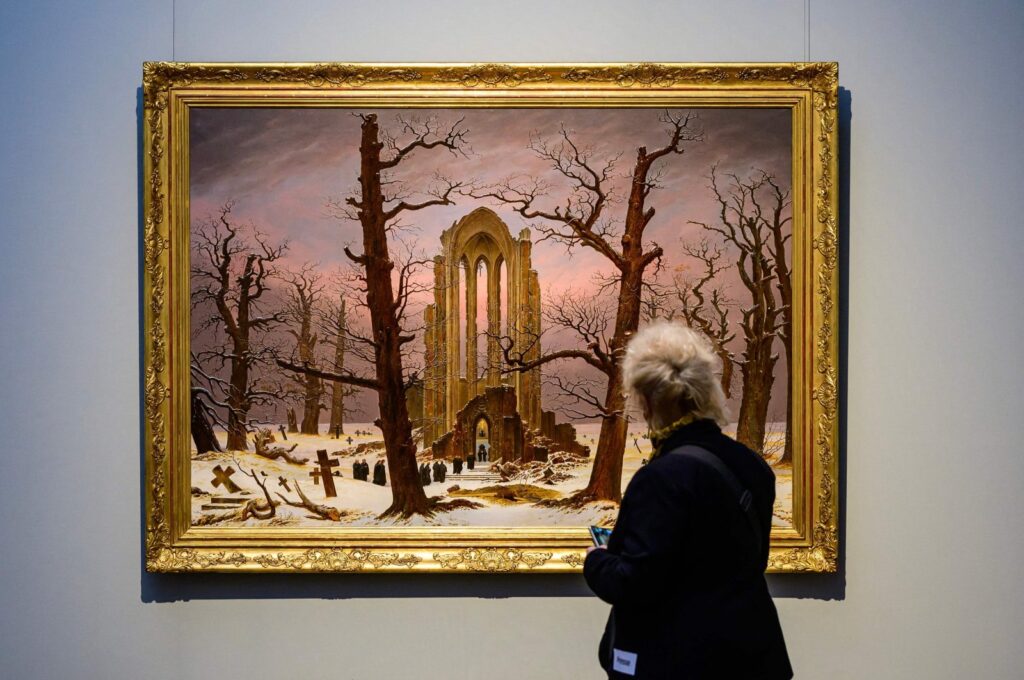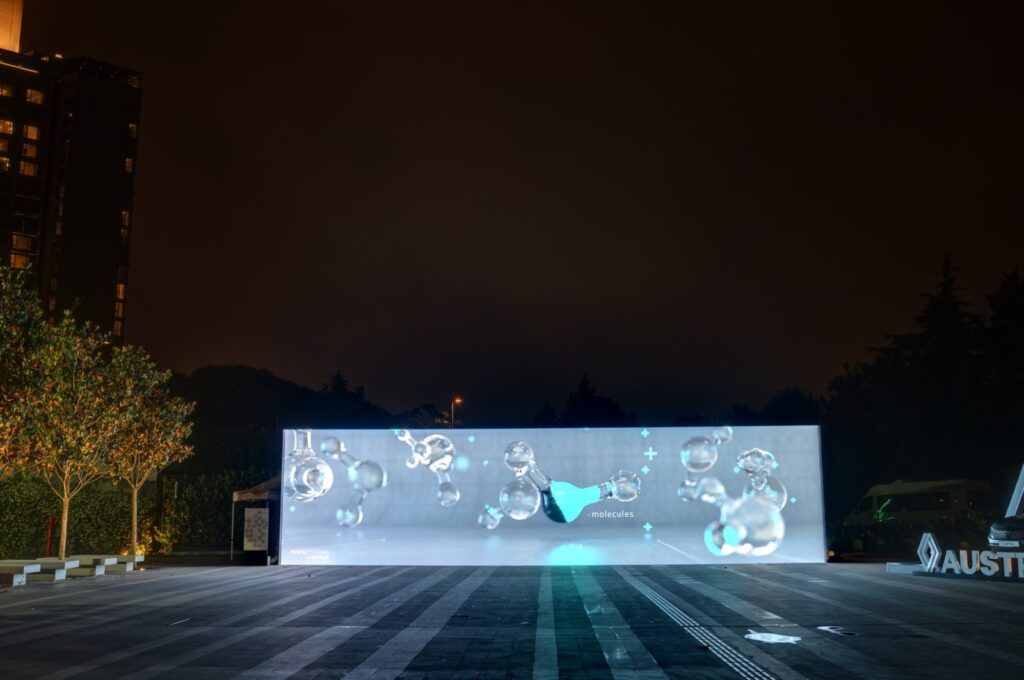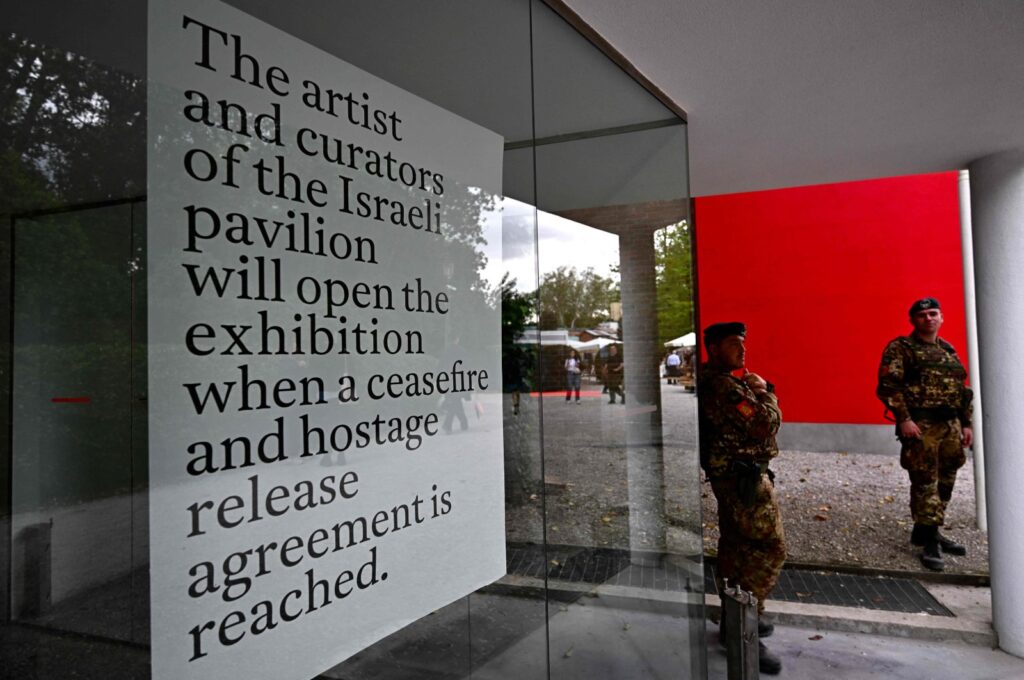
Marianna Cerini
The sound of techno-punk confirmed I was in the right place. In their instructions on how to reach El Cocal Glass Studio, co-owners Chiara Lee Taiarol and Mariana Oliboni had said to “follow the music” as I made my way down a dusty alley and into an industrial complex off the touristy streets of Murano, the tiny island in the Venetian lagoon known globally for its glassmaking craft. “You’ll hear us,” they had told me over the phone.
Stepping inside their workshop, which was lit up by disco lights, the music was even louder. Three women – Taiarol, Oliboni and Natalie Nikolova, a recent addition to the team – were moving swiftly around the space as if in sync with the beat, taking turn to place a long ferro sbuso (a metal blowpipe used to gather molten glass and begin the shaping process) into a red-hot, 1,200C refractory stone oven. Their working rhythm was deliberate, their movements almost choreographic.
“The music powers us up,” Oliboni said, as she saw me and went to turn the volume down. “We do things a little differently from other studios, but we like it this way.”
The techno-punk is only a part of it. El Cocal is Murano’s first female-owned glass furnace. “Different” is the watchword for its entire essence – though you could say revolutionary, too.
For much of its 700 years’ history – the Republic of Venice moved all glass furnaces and their artisans here in the late 1200s to contain the risk of fires in the city and, some say, protect the techniques behind the art – Murano’s glassmaking sector has been notoriously male-dominated, often by families that have been in the business for generations. Sons, not daughters, would inherit the furnace and its trade secrets, beginning training as young as nine to master the craft of Venetian-style glass (the official descriptor for glass manufactured on the island).
“While you would find them doing lampwork (a type of glasswork in which a torch or lamp is used to melt the glass) decorating glass objects or serving as impiraresse (bead-stringers) for jewellery-making, women were nowhere to be seen in the workshops themselves,” said Rosa Barovier Mentasti, a historian specialising in the history of Venetian glass. “Molten glass can be extremely heavy to handle, so glassblowing was considered to be too much of a physical discipline for them to do.”

Ultimately, women – and new faces in general – might come to play a crucial role for the future of glassmaking on the island (Credit: Massimo Pistor/El Cocal Glass Studio)
The blistering heat of the furnace – to be moulded in the kiln, glass requires temperatures of up to 1600C – was another reason why women weren’t deemed fit to work the field. To have them run their own studio would not only have been mostly unheard of, but unthinkable.
“As far as records go, the only woman who was ever given permission to lead her own furnace was Marietta Barovier, in 15th Century Venice,” said Mentasti. “She came from a family of glassmakers and would end up creating her very own glass design – the perla a rosetta – which is still produced today. But for the most part, the whole industry has always been a very masculine space.”
I wanted to demonstrate that when it comes to glass, physical strength might be less important than determination and the power of imagination
El Cocal, which Taiarol founded in January 2021 after a decade working with glass in the United States, is now working to correct this exclusionary history. “When I moved to Murano from abroad looking to work in glassmaking, I felt alone professionally,” she said. “I had all this experience, but it didn’t seem to matter. I got tired of being merely tolerated, if not openly rejected, by the local sector.”
She decided to make El Cocal a formative space for women to learn about and work with glass. “I wanted to demonstrate that when it comes to glass, physical strength might be less important than determination and the power of imagination,” she said.
Oliboni concurred. “I had never been in a furnace until Chiara asked me to join her,” she said. “One year on, I can make objects out of this impossibly elusive material. I am proof there’s space for everyone in this craft.”

Chiara Lee Taiarol founded El Cocal as space for women to learn about and work with glass (Credit: Massimo Pistor/El Cocal Glass Studio)
Alexis Silk, an American artist and trained glassmaker who’s been working in Murano since 2012, also seeks to challenge the industry’s modus operandi. “Murano is a place steeped in tradition,” she said. “That’s exactly what makes it so unique, and its glasswork so special. But it’s also its biggest drawback. It’s hard to look at the future and welcome changes when you’re so anchored in the past. Through my presence here, I hope to foster the advancement of this art and show that a woman is as capable of working glass as any man.”
Silk makes monumental figurative pieces of female bodies that explore themes such as objectification and societal perceptions, sculpting them entirely freehand. They can weigh up to 32kg and stand up to 2m tall. In the glassmaking world, there are very few people who work on such a large scale – and that goes for all genders.
To help her handle the glass, Silk works with eight to nine glassmakers – all men – at Ars Murano glass factory, one of the island’s most internationally renowned workshops. But, between episodes of sexism and pushback, it took her a while to find a team she could trust.
“There generally is a reluctance towards letting women in,” she said. “It wasn’t until Ars Murano that I felt at home as a glassmaker. Here, they respect me. There’s a complete lack of ego.”

Between episodes of sexism and pushback, it took glass artist Alexis Silk a while to find a team she could trust (Credit: Alexis Silk)
Mentasti agrees. “In the world of Murano, design has been the greatest conquest for women,” said the historian. “It’s the space where they have been able to form meaningful relationships with the glass workers and, in a way, redefine the ‘rules’ of who is and isn’t allowed in the workshop.”
Venice-based sisters Elena and Margherita Micheluzzi, who launched their own glassware brand Micheluzzi Glass in 2019, are a case in point. The duo work collaboratively with master glassblowers to create their collections of vases and table glasses, which are made by cold-carving into blown glass. “We’ve learned from watching our father [Massimo Micheluzzi, one of the sector’s most renowned glass designers],” shared Elena. “We discuss every piece we make with the maestri, and consider their suggestions. In turn, they strive to understand what we’re after. We’ve encouraged a dialogue, and that’s helped both us and them. It’s how you push Murano forward.”

Elena and Margherita Micheluzzi, of Micheluzzi Glass, work collaboratively with master glassblowers to create their collections (Credit: Marianna Cerini)
Laura Sattin, who works with glassblowers both in Murano and Basel, Switzerland, shared similar thoughts. “Women are very good at working as a team. They listen, often better than men do. In Murano, that’s an asset. It’s something the maestri appreciate and respond well to. When there’s a harmonious balance, great work happens.”
Ultimately, women – and new faces in general – might come to play a crucial role for the future of glassmaking on the island.
Most of Murano’s glassmakers are well into their 70s. In many glassmaking families, sons are no longer taking over from their fathers, but pursuing different careers, often away from the island. Soon, new talents will be needed to ensure the craft continues to be passed on.
“Since opening, we have had quite a few inquiries from girls and women to come train at El Cocal, and many of them are from Murano,” Taiarol said. “It’s time to put scepticism behind and give us the opportunity to claim our space.”
Courtesy: BBC
The post Venice’s ‘unbreakable’ women of glass appeared first on The Frontier Post.








